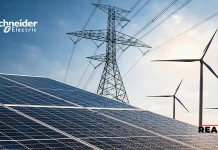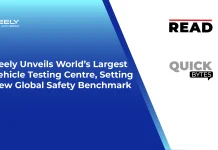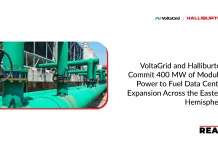From the outside looking in, the Genesee Generating Station just west of Edmonton is a key provider for thousands of Albertans who need reliable power. But there’s more to the project, thanks to an industry-leading collaboration between the project’s constructor, PCL, and Lafarge Canada.
Also Read: The Roof Masters First to offer Timberline Solar from GAF Energy to San Diego
“Lafarge brought ECOPact to the table,” says Chris Pullen, vice president and general manager, Edmonton Industrial Management, at PCL. “We knew it was exactly what our client would want to see going into the project.”
ECOPact is Lafarge’s greenest and lowest-carbon concrete and is positioned to be a game-changer for construction across Canada. “It has the same performance and quality that we’ve always provided in our concretes,” explains Prez Skiba, vice president and general manager for Lafarge in Northern Alberta. “The difference is that now we can reduce the carbon emissions that go into its manufacturing.”
The partners in the project benefited with emissions reductions beyond their initial targets. “Lafarge understood the performance requirements our engineers had identified,” says Pullen. “A project this size had many specific requirements. So to hit the emissions reduction targets that Lafarge proposed, we needed to ensure that we didn’t compromise on any of them.”
“The original concrete proposed was already a low carbon design, with emissions lower than standard concrete, but we knew we could take it further,” says Skiba. “We brought in further emissions reductions with our ECOPact design, and we were able to reduce embodied CO2 by an additional 20%. That’s 20% over and above the original design, which already offered a 20% reduction. The combined 40% CO2 reduction is equivalent to the energy used by 70 single houses in one year.”
Lafarge’s Quality Assurance team, conveniently located nearby at Lafarge’s Western Canada Innovation Centre, achieved both PCL’s strength and performance targets while maximizing CO2 emissions reductions. Thanks to its global network of research and development facilities, Lafarge optimizes cement content by customizing blends and including upcycled construction and demolition materials.
The customized blend on this project was built on the circular partnership between Lafarge and PCL. “Power generation creates fly-ash byproducts,” explains Skiba. “But with ECOPact, we can seize those byproducts and use them in the concrete, keeping them out of the landfill, decreasing embedded carbon and keeping the circular economy going.”
“We have a shared responsibility to maximize the circular economy whenever we can. Instead of sending fly ash from power generation to a landfill, we have an opportunity to use it right here in our own operations. It’s in line with the sustainability goals we have as a team,” shares Pullen.
Both partners – two of Alberta’s largest employers – see this as one of many future innovations. “We’re construction specialists and solution providers,” says Pullen, “and we’re also innovators. We aren’t afraid to push the limits of what’s possible while delivering the expertise and quality that our clients have come to expect from us.”
“We’ve got to challenge ourselves and think outside the box,” shares Skiba. “Having partners like PCL who are open to using new technologies is essential for us to change the way that we’re building. ECOPact is just one example of how we can maximize the circular economy, collaborate, and find lower carbon solutions. We’re not stopping now – building sustainably is what we do.”




